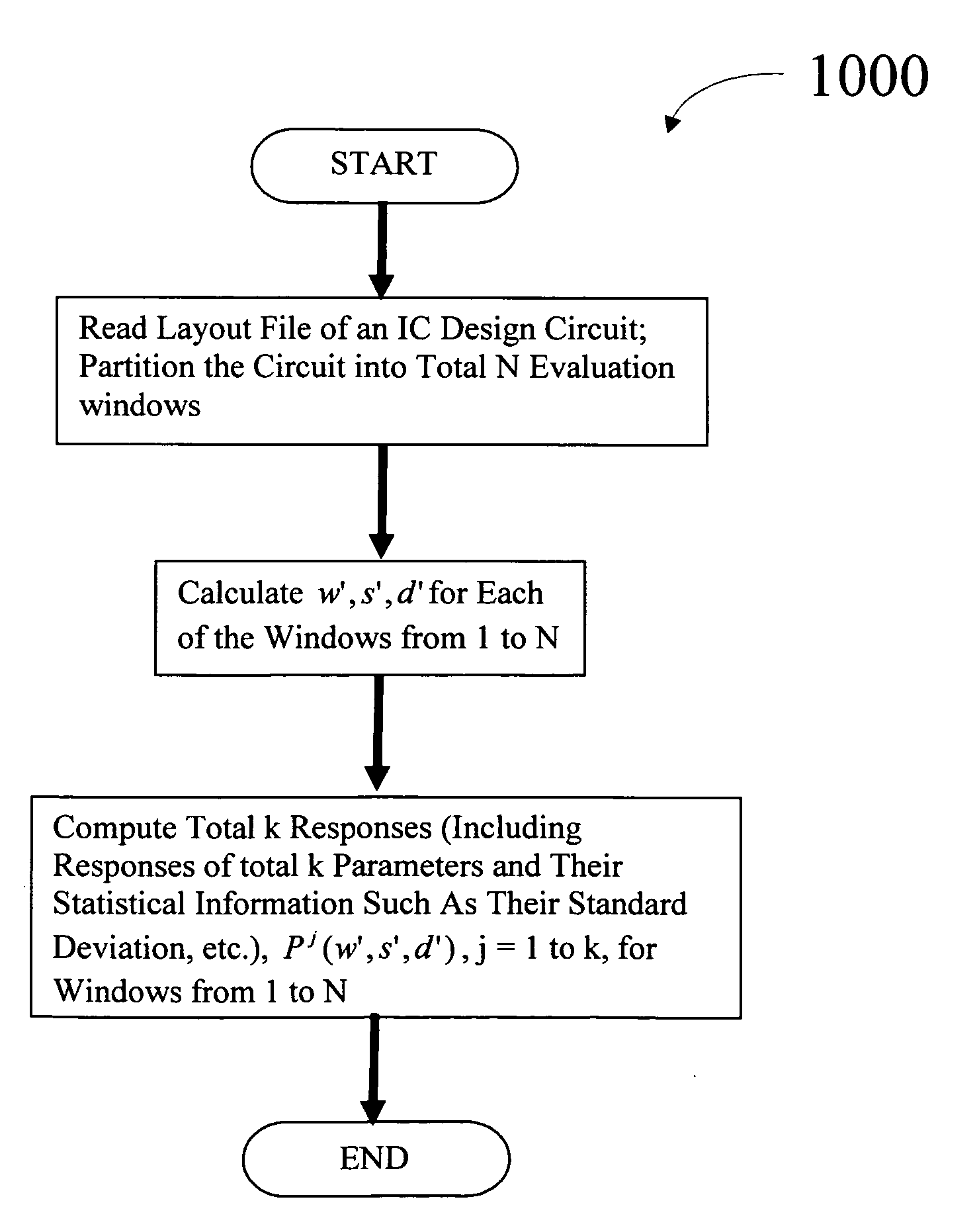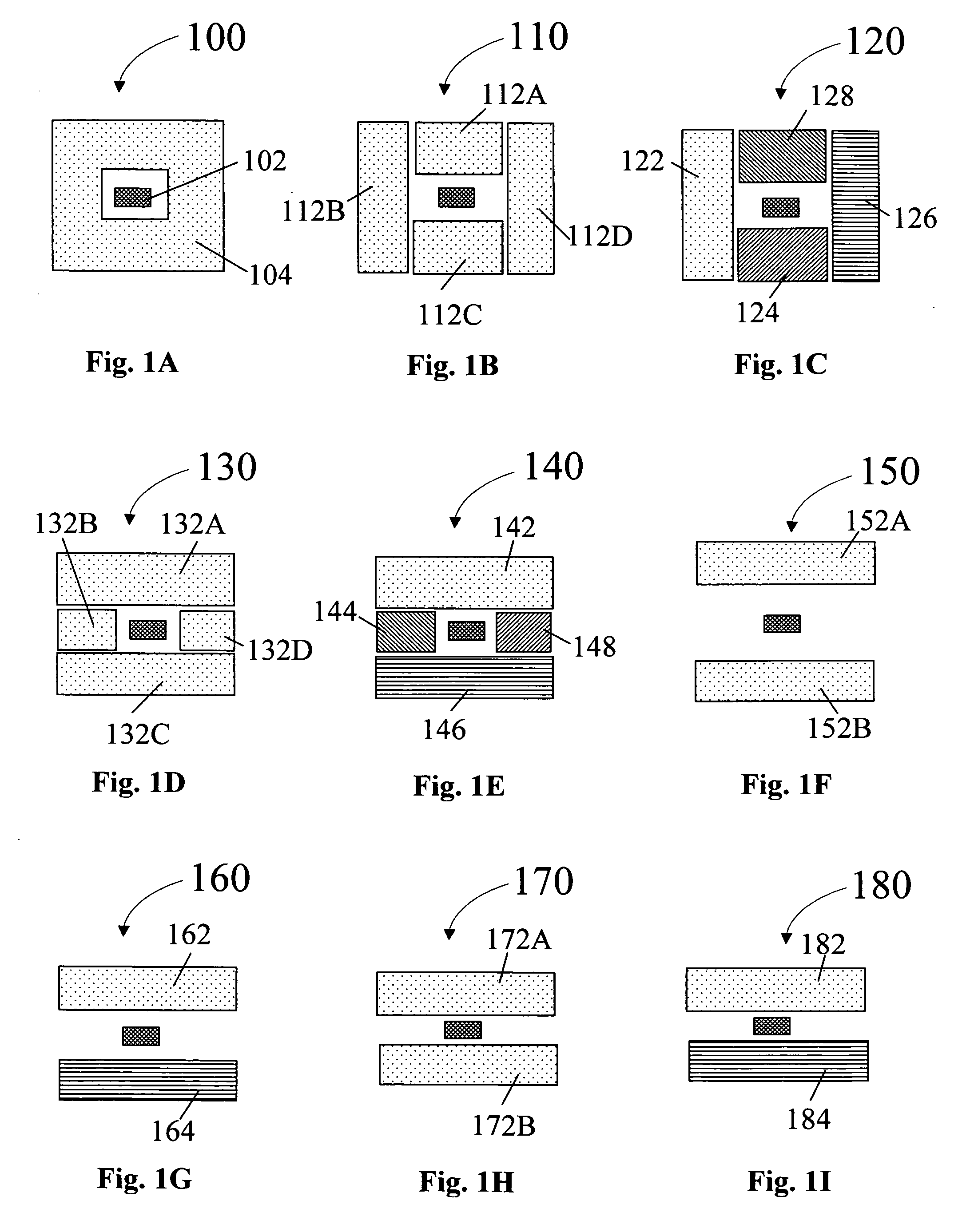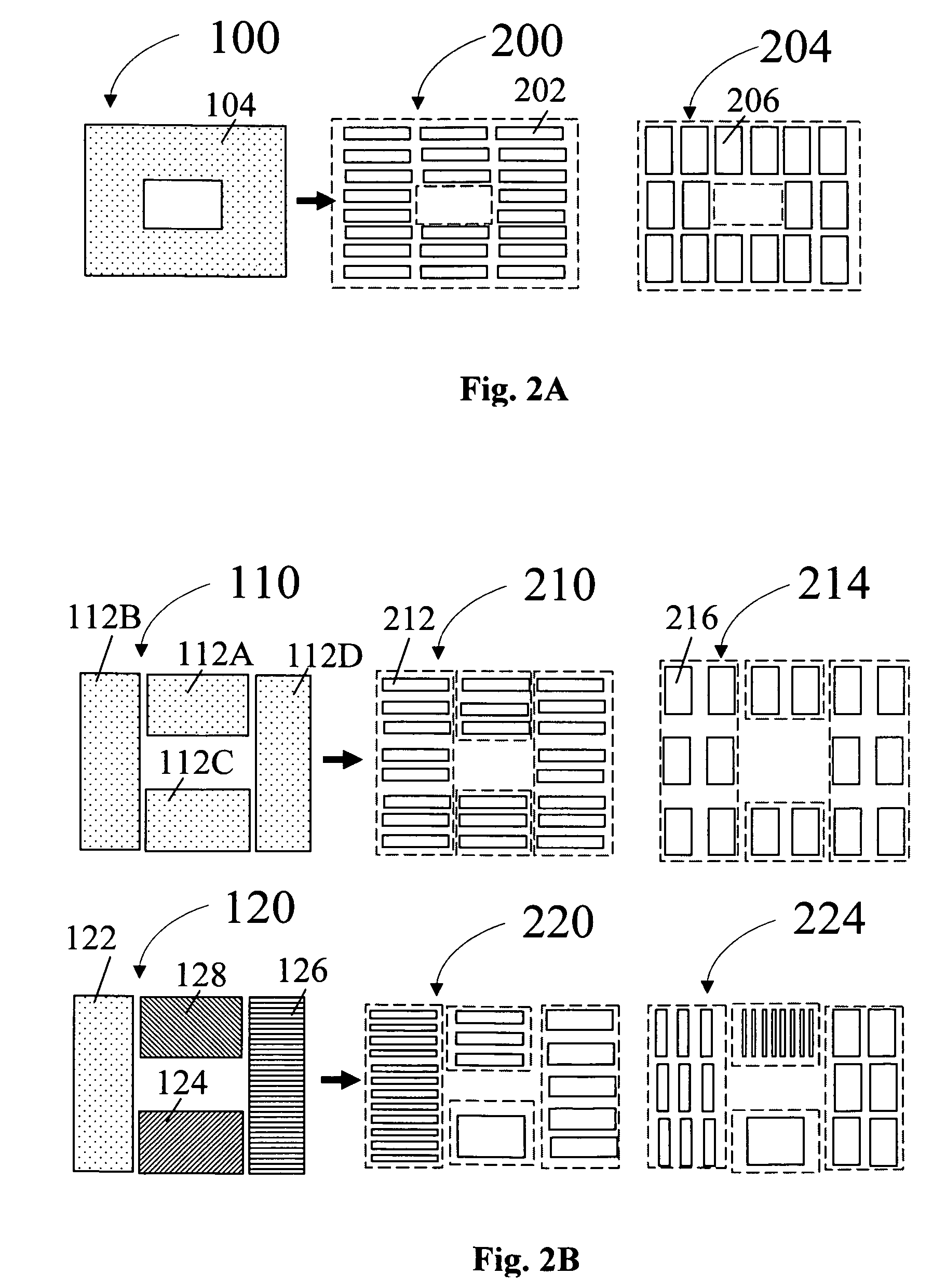Evaluation method for interconnects interacted with integrated-circuit manufacture
a technology of interconnections and evaluation methods, which is applied in the direction of error detection/correction, semiconductor/solid-state device testing/measurement, instruments, etc., can solve the problems of significant timing delay in circuits, non-uniformity of conductor wires and dielectric thicknesses, and product yield loss, so as to improve manufacturing yield and improve interconnect layout design
- Summary
- Abstract
- Description
- Claims
- Application Information
AI Technical Summary
Benefits of technology
Problems solved by technology
Method used
Image
Examples
illustration 300
[0035]Illustration 300 in FIG. 3 shows layout examples of a Sensor 102 from a top view. Sensor 310, 320, 330, 340, 350, 360 and 370 show that they can be of any shape, size and orientation. In reality, they can be straight or curved, and not limited to a rectangular or square as shown in this figure. A Sensor can be a transistor, conductor, resistor, capacitor, inductor, etc., depending on where (at which layer) it is located in the silicon circuits. Note that the dotted-line region of the the transistor Sensor 370 illustrated in FIG. 3 is a diffusion or doped silicon layer, not a conductor layer.
(Method of Design)
[0036]The method of the design is to first identify an Environment that is the most basic type to construct the IC interconnect layouts. This can be achieved by investigating many existing IC layout designs to identify the most basic-element Environments. By varying or scaling the dimension of an identified basic-element Environment and by arranging the varied and scaled ...
illustration 400
[0037]Illustration 400 in FIG. 4 illustrates a general design method for interconnect test structures to accurately capture the response of the interaction between the interconnects and the IC manufacture processes. The simple Environment illustrated in Illustration 400 can be considered as a basic-element Environment constructing the IC layouts. It has two Fields, Field A (410) and Field B (420), side by side with a empty gap, a part of the empty Field C, in between. Fields A and B can have different or same interconnect conductor wire features within. In Illustration 400, the interconnect conductor wire features are different in Fields A and B. Field C is the total combined empty regions around Fields A and B. Field C has no interconnect conductor wires within. A Sensor 102 is placed at different locations of this basic-element Environment. In general, a typical IC layout is basically the repetition of such type of Environment with varied depth of Field A and Field B and of the Fi...
illustration 500
[0057]Illustration 500 in FIG. 5 is a specific example of the design method. The basic Environment element shown resembles the basic cases in IC layout design with Fields A and B comprising narrower rectangle-shaped wires. Three groups of variables are varied here. They are (1) the location of the Sensor 102; (2) the depth of Fields A and B, hA and hB, and the depth of Field-C gap region between Fields A and B, hC; (3) the interconnect conductor wire features such as the wire width, wire length, wire spacing, wire density, wire shape, wire pattern, etc., within Fields A and B. Fields A and B are comprised of the conductor wire element 510 and 520 respectively. An IC layout design can be a repetition and arrangement of such basic Environments here with varying the above three groups of variables. Note that the interconnect conductor wires are not limited to run only horizontally as illustrated in this specific example. In reality, they can run horizontally or vertical in IC layout de...
PUM
 Login to View More
Login to View More Abstract
Description
Claims
Application Information
 Login to View More
Login to View More - R&D
- Intellectual Property
- Life Sciences
- Materials
- Tech Scout
- Unparalleled Data Quality
- Higher Quality Content
- 60% Fewer Hallucinations
Browse by: Latest US Patents, China's latest patents, Technical Efficacy Thesaurus, Application Domain, Technology Topic, Popular Technical Reports.
© 2025 PatSnap. All rights reserved.Legal|Privacy policy|Modern Slavery Act Transparency Statement|Sitemap|About US| Contact US: help@patsnap.com



